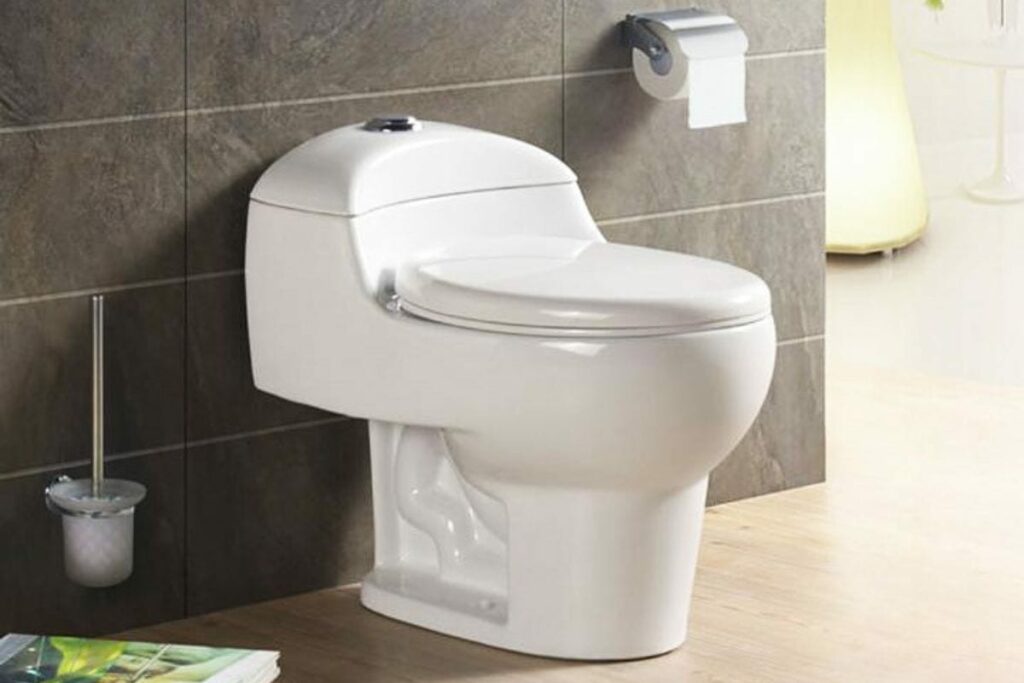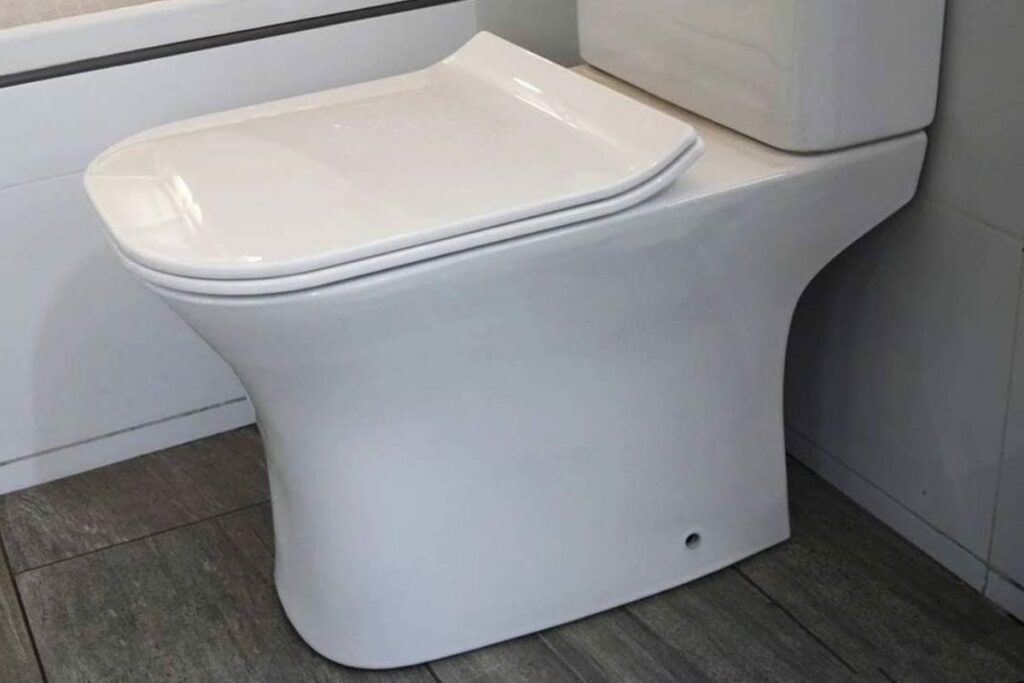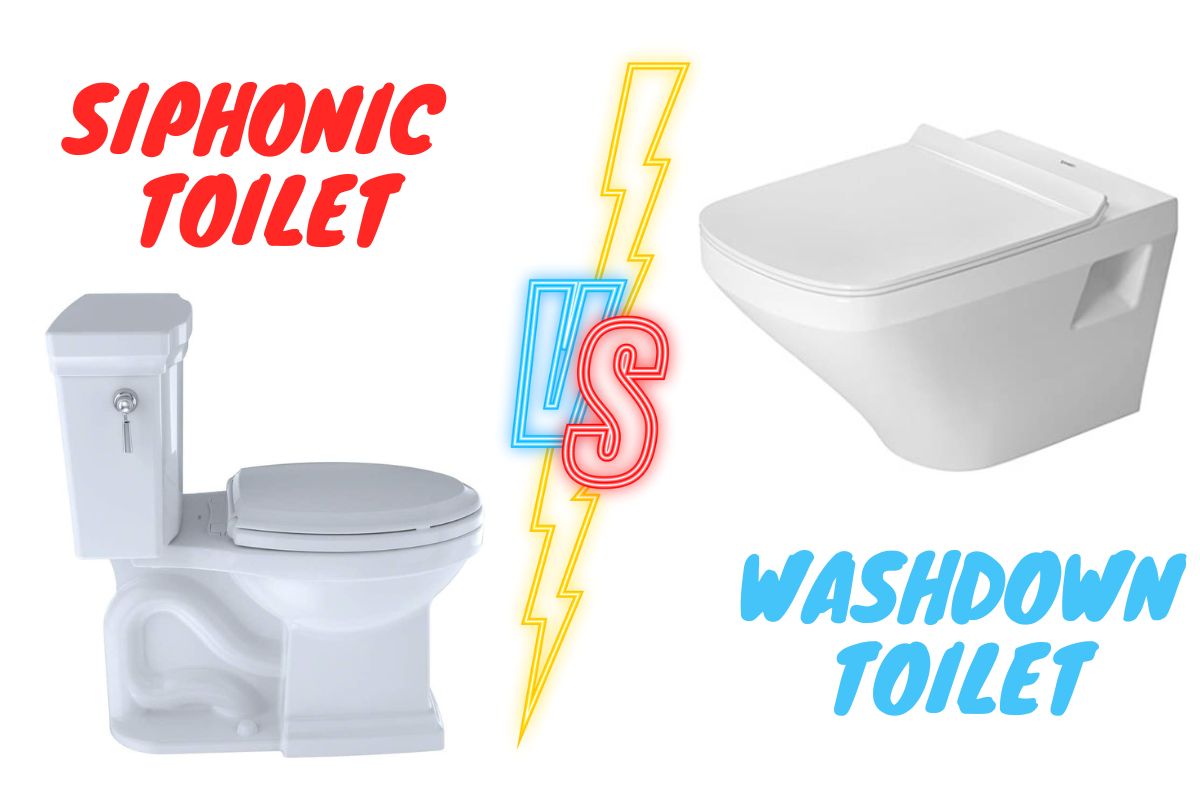If you’ve ever gone toilet shopping or plan to do so in the future, you’ll notice the terms washdown and siphonic toilet on the product detail page. You might be wondering what that means and whether you should think about it.
A siphonic toilet is a type of toilet that uses a siphon to eliminate waste. This siphon is connected to the sewer system and removes waste directly from the sewer. On the other hand, a washdown toilet is a type of toilet that uses water to cleanse and sanitize the waste after it has been eliminated.
I’ll go over all of your concerns and answer all of your questions so that when you go to buy a toilet, you’re not left scratching your head, trying to figure out what this means.
Let’s get into the nitty-gritty of both toilets to make things easier for you.
What Is a Siphonic Toilet?

A siphonic toilet is a type of toilet that uses a siphon to collect and discharge waste. The siphon is a channel that runs the length of the toilet, connecting the waste pipe to the flushing water pipe.
The siphonic toilet has an easily identifiable S-shaped or reversed P-shaped trap way effectively designed to look like a siphon. The carefully articulated design ensures one end of the siphon enters the bowl while the other connects to the drain pipe.
Siphonic toilets are a popular purchase in the US marketplace and a go-to option for many people. Along with being sleek and narrow, the unique shape of the trap way decreases the speed of the stream of water as it leaves the toilet bowl.
Furthermore, the trap way is fully glazed, which means it provides an almost frictionless exit for the flow of water, which is beneficial because it reduces the accumulation of dirt and bacteria on the toilet surface, increases the ease of flow, and ensures less clogging.
The powerful flush effectively removes most of the waste, minimizing the residue content in the toilet bowl. The toilet bowl contains a higher water content level and a relatively longer base of 7×8.
How Does a Siphonic Toilet Function?
The siphonic toilet works by first allowing the water to exit the tank through the opening of the flush valve and leaving through the trap way. As water exits, it displaces air to form a vacuum, and when it flows over the kink (weir), the siphon starts working.
As you pull the lever or the flush button, the flush valve opens, and the water starts gushing out into the toilet bowl. You must have noticed that whenever you flush, the water levels first increase to high levels before ultimately receding- ever wondered why?
The answer is relatively simple and lies in the fact that the flush valve diameter is much greater than the trap way diameter, so the rate at which water emerges is faster than its exit.
When this water exits the trap way, it displaces air to form a vacuum and flows over the kink or the weir, marking the point where the siphon starts working. You can even easily observe as the water stops rising at this point.
The siphon is so strong that it can suck out heavy amounts of waste conveniently with water. The toilet bowl then fills up with remnant water, and the water tank starts replenishing as well. A gurgling sound at the end signifies that the siphon has stopped.

Advantages and Disadvantages of Siphonic Toilets
With a quieter flush and a toilet bowl that mostly remains cleaner and is less likely to cause an odor in the bowl, the siphonic toilet has a number of advantages you need to consider. But, if I’m being honest, it has some cons too.
The toilet bowl has a higher water content level that makes sure the solid waste is well diluted, which causes it to have less odor because, let’s face it, nobody wants a bathroom that smells bad. Due to the high water content level, it’s not prone to leave behind bowl streaks, giving the toilet an overall cleaner appearance.
The siphonic toilet’s mechanism ensures that only the tiniest amount of residue remains in the toilet bowl, so multiple flushing is rarely required. The flush is also way less noisy.
However, it does also have its own set of drawbacks. At times, the bathroom space may be inadequate, or the layout is such that the area is less.
If this is the case, a siphonic toilet may not be the best choice as it has worked best with comparatively longer toilet bowls. Moreover, the narrower trap way makes clogging a real issue in this type of toilet and a real menace.
What Is a Washdown Toilet?

A washdown toilet is a type of toilet that uses a water-based cleaning solution to clean the bowl, rather than a traditional cleaning solution. The main advantage of this type of toilet is that it is much more environmentally friendly – simply pouring down a bucket of water after use is enough to clean the bowl.
A washdown toilet is easily distinguishable because of its features: a broader and shorter trap way, a 4’’x 5’’smaller water surface area found deep down, a flush push button rather than a lever, and in a few models, dual flushing mechanism aiming at efficient usage of water.
How Does a Washdown Toilet Function?
In the washdown toilet, the sheer force of the water pushes out the wastes through a short and wide trap way which allows the waste and water to exit the bowl seamlessly. It certainly has a leaner working mechanism as compared to the siphon toilet.
It functions through a pushing mechanism only, which is massively dependent on two factors: the weight and gravitational flow of water. The less volume of water in the bowl instantly pushes out the waste as its overall mass is lighter.

Advantages and Disadvantages of Washdown Toilets
In theory, both the washdown and siphonic toilets use the force generated by the stream of water to push out the wastes. Keeping this in mind, designing these toilets in a way that used water efficiently became a pertinent issue.
The main advantage of washdown toilets is that it utilizes less water on average, which saves numerous gallons of water on a daily basis and helps in water preservation. It is also less prone to clogging and can handle larger waste loads.
It has a short bowl base which is perfect for people who plan to go for a minimalistic look for their bathrooms, and it also acts as a space saver. It is also equitably easy to keep clean and maintain.
On the contrary, it has a lower water level, which increases the likelihood of splashing and is the main setback. Even the chances of waste residue leaving behind are frequent, because of which second or third flushing might be necessary, and skid marks may appear as well.
It also leads to a terrible bowl odor in no time if you do not flush mid-way, and the loud flush noise can be exasperating after a point too.
Which Is Preferable: Washdown or Siphonic Toilets?
If your bathroom space is limited and you’re environmentally conscious, washdown toilets are more preferable for you. You could consider space-saving models of washdown toilets instead of siphonic toilets.
Siphonic toilets have a larger flush valve than diameter but a more narrow trap way than washdown toilets and a higher possibility of clogging.
Comparatively, the area of water surface of the washdown toilets is narrower, it is relatively easy to maintain, has a shallow bowl base, proneness to clog is on the lower side, and the waste residue is more common when compared to a siphonic toilet.
Otherwise, siphonic toilets would be far more preferable because they do not keep odor to a minimum, ensuring a lower possibility of skid marks. The maximum residue is flushed out, and the flushing noise is comparatively quiet.
Conclusion
To sum it up, both of these toilets have their own set of advantages and disadvantages, so the actual question to ask yourself at the time of purchase is what suits your own needs the best?
Choosing the perfect toilet for you is a personal choice and should be done after carefully considering your comfort levels and daily needs.
Are you someone who absolutely detests awful odor? Would you go for a space-saving toilet design to make your bathroom look more spacious? Or you might be someone who can not handle the thought of a jarring flush noise, maybe when your relatives are next room?
Whatever the case, you’ll now be able to choose the right fit for you after in-depth consideration of every aspect with the help of this article.

Amos Christen graduated with a bachelor’s degree in Interior Design from Drexel University — Philadelphia, PA. Since 2003, Amos has worked with top interior design professionals in this area, including architects and interior/graphic/lighting designers. As a skilled interior designer, Amos Christen is highly versed in fine arts and crafts and uses that to supplement his main area of expertise. He often publishes articles related to home décor on several websites, including Sprucetoilets.com, Sprucebathroom.com, and Mybesuitedhome.com. He also contributes to leading interior design magazines.
